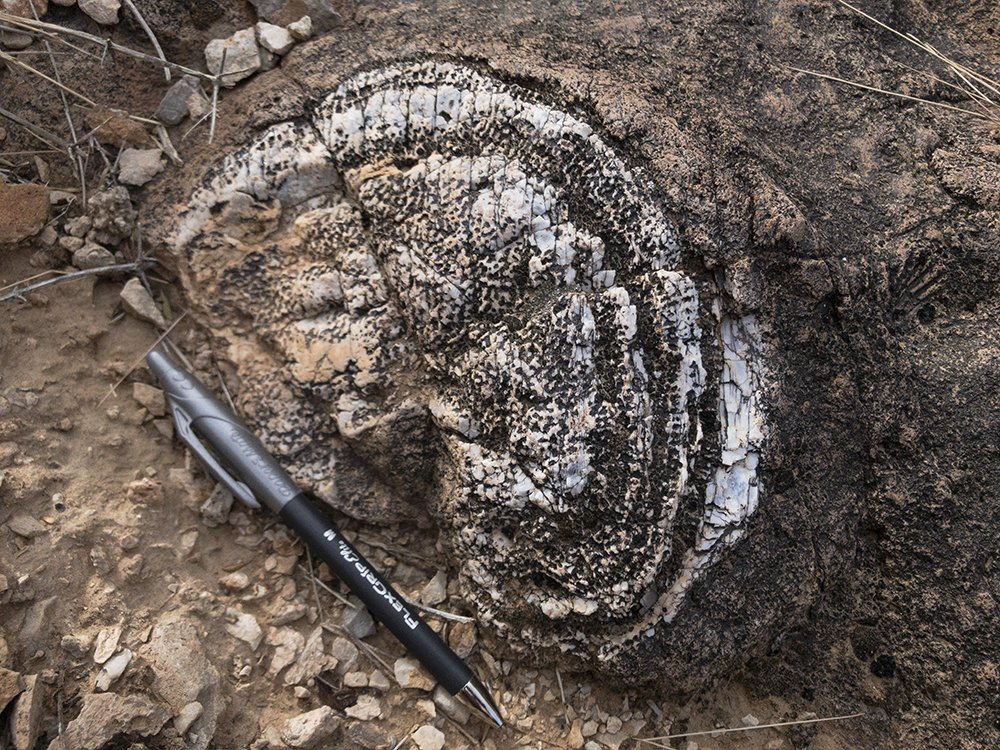My fellow rockhounds and I have been having great fun trying to figure out what this photograph depicts. I spotted this fossil on a hike a few days ago in the Red Rock National Conservation Area. That’s just a few miles outside of Las Vegas, Nevada. In an area called Fossil Ridge. If you put this GPS decimal coordinate into a browser search bar you’ll call up a map of the location.
36.1123, -115.4247
Due to the sedimentary nature of the area I am thinking the white material may be chert. But since this is a no collection area I couldn’t take anything away. As a matter of fact, I felt good for not touching it and leaving it undisturbed. Due to the number of sponge fossils in the area, a local professional ecologist suggests it could be the exposed internal structure of a sponge fossil.
Update! The joy of discovery through photography. A photograph can be as memorable as anything you pick out of the ground. Dr. Josh Bonde, a local, renowned paleontologist, says this about this image:
“Not having the specimen under my nose always makes it a bit more difficult to provide a positive ID. That said, it looks to me like a stromatoporid sponge. It looks like just up and to the right of the sponge you have part of a brachiopod as well. That’s my guess.”
Isn’t that wonderful? I can now look up this sponge and learn all about it. And did you see what he saw with this low resolution photograph? A brachiopod or shell like organism at the middle and to the right of the sponge. I totally missed it before.
Thanks to all the people who helped me with hints and with finally connecting me to the good professor. I’ll write more about this kind of exploring and collecting in my book.

